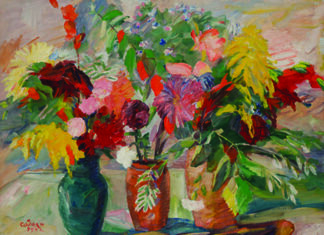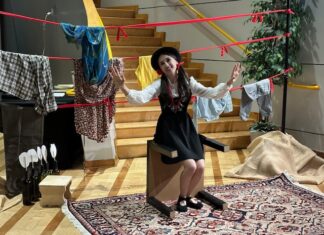ARLINGTON, Mass. — The home of the Hakob Karapents library-collection, the Armenian Cultural Foundation (ACF), on Sunday, November 21 at 4 p.m. will mark his 85th anniversary, as of one of the most prolific of modern Armenian writers.
Organized by the ACF, this event is co-sponsored the Amaras Art Alliance, Armenian Society of Boston, Hamazkayin Boston Chapter, the Armenian Independent Broadcasting of Boston and the Armenian Cultural Committee of Greater Boston. The program will include two keynote speeches by Dr. Vartan Matiossian (in Armenian) from New York and Mr. Tatul Sonentz-Papazian (in English), former editor of the Armenian Review, and a presentation of Karapents’ life by Ani Arakelian.
Born in 1925 in Tabriz, Iran, Karapents entered the American-Armenian literary and journalistic scene in 1947. Over the next 40 years, until his death in 1994, Karapents contributed extensively to major American- Armenian and diasporan newspapers, magazines and periodicals among them: Hairenik Amsagir [Hairenik Monthly], Bagin [Altar], Alik [Wave], Asbarez [Arena], Horizoni Grakan Haueluats [Horizon Literary Supplement], 80- akan (80s), and many others. Karapents contributed articles and reports to Hairenik’ Orat’ert’ [Hairenik Daily] and his works have been reprinted in the pages of Armenian Diaspora papers from Boston to Istanbul, and from Cairo to Tehran. His distinctive prose style has made him widely known in both the diaspora and Armenia. Albeit belatedly, they began to appear recently in the pages of the papers in his beloved Armenia.
The first literary attempts of Karapents were poems, short articles and journalistic reports, which appeared in the pages of Aruseak, Loys [Light], Eros periodicals and later in Alik daily. The decades of the 1950 and 1960s were especially fruitful. The first volume of the writer’s short stories, titled Antsanot’ hoginer [Strange Souls], was released in 1970 when he was already a well-known writer. This work was followed by his second in 1972, a novel titled Kart’ageni dustreˇ [The Daughter of Carthage], which received the Haykashen Uzunian award (Beirut, 1972).
In 1975, with Suren Gracian, Karapents participated and edited the Armenian portion of the text titled Khosakts’akan arewelahayeren [Spoken East Armenian] in the bilingual (Armenian-English) textbook with the same title, under the auspices and published by the American Council for Learned Societies.
Karapents’ third volume, Nor ashkharhi hin sermnats annere [The Old Sowers of the New World], was published in 1975. This and the above-mentioned two volumes were published in 1995 in Armenia in the first volume of a twovolume set of the works of Karapents.









